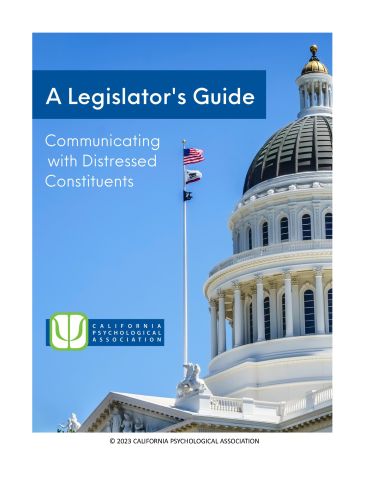Our friends over at the American Psychological Association recently brought to our attention a publication created by their affiliate, the California Psychological Association, entitled ''A Legislator's Guide: Communicating with Distressed Constituents.' (PDF-418 KB) The document was authored by clinical psychologist Sandra R. Harris, Ph.D. and was originally created and distributed to members of the California State Legislature. The information that it provides, however, translates well to the challenges Members of Congress and congressional staff face at the federal level when assisting constituents with casework requests, taking constituent comments over the phone, or answering constituent letters or emails.
 Of course, the vast majority of the interactions Members and staff have with citizens are opportunities for a calm and meaningful exchange of views on current public policy debates. But what do you do when communications break down? Or better yet, how do you keep them from breaking down in the first place? Dr. Harris provides guidance for anyone on the forefront of dialogue between citizens and legislators. She provides suggestions for how legislative branch staff can enhance communication with constituents, as well as how to most effectively communicate with verbally aggressive or physically destructive people.
Of course, the vast majority of the interactions Members and staff have with citizens are opportunities for a calm and meaningful exchange of views on current public policy debates. But what do you do when communications break down? Or better yet, how do you keep them from breaking down in the first place? Dr. Harris provides guidance for anyone on the forefront of dialogue between citizens and legislators. She provides suggestions for how legislative branch staff can enhance communication with constituents, as well as how to most effectively communicate with verbally aggressive or physically destructive people.
Members of the House represent an average of 646,952 constituents and some friction is inevitable. If you've ever taken a call from an unhappy constituent - a rite of passage on Capitol Hill that I've faced countless times - these tips can be helpful reminders for how to foster a more meaningful exchange of ideas that helps the Member, staffer, and constituent feel good about the interaction.
Download the guide here: Communicating with Distressed Constituents (PDF) (420KB)


